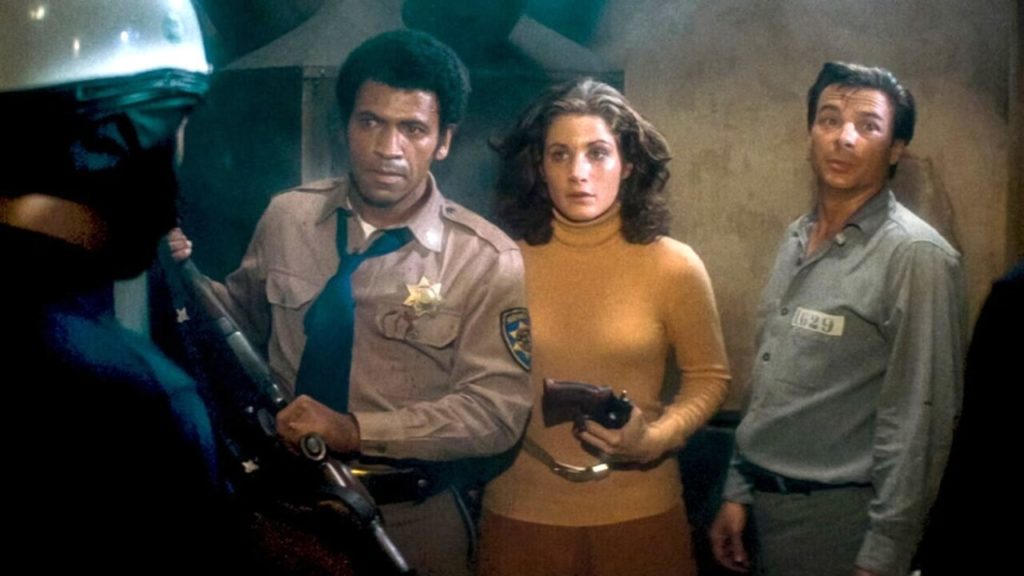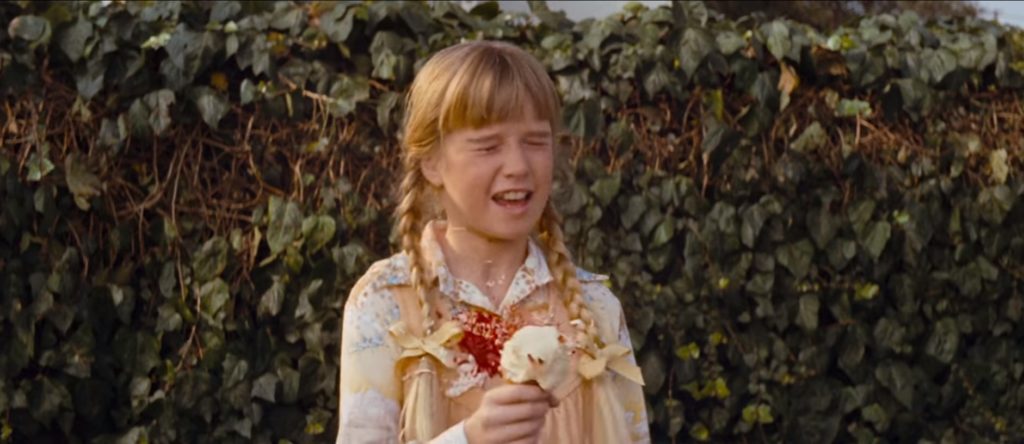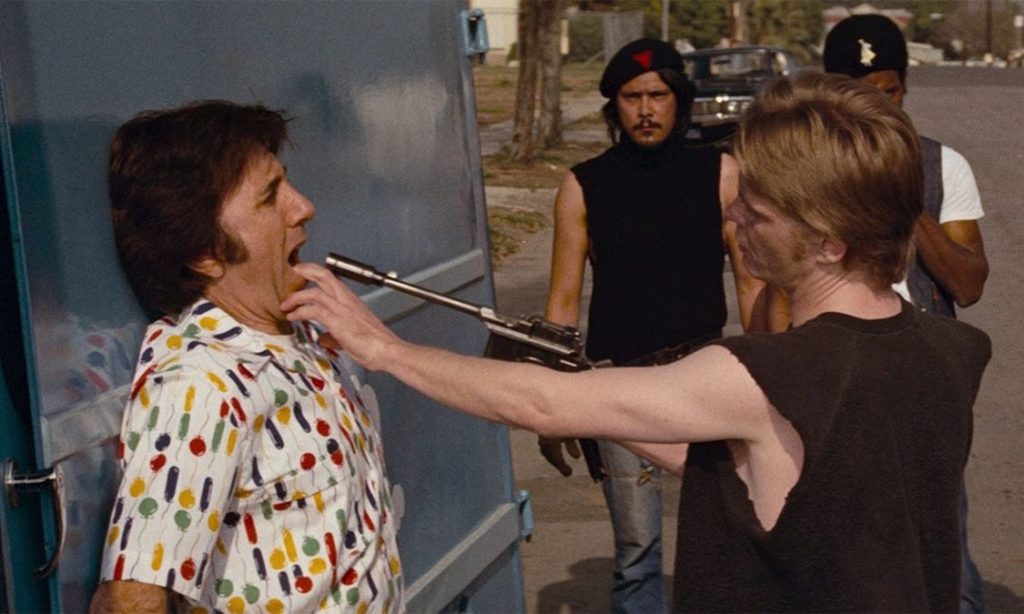| Lucas Hardwick |

Assault on Precinct 13 plays at the Trylon Cinema from Friday, March 17 through Sunday, March 19. Visit trylon.org for tickets and more information.
If you were to drive by L.A.’s Anderson Police Precinct 13 in a modern day alternate reality, you’d find a district simply known as The Precinct, vibrating with hipsters in an entirely gentrified neighborhood surrounded by condos housing Instagram influencers and artsy small businesses. The formerly derelict Precinct 13 is now home to an incandescently lit, irony-gilded gastropub called The Assault ran by bearded, cat-eye rimmed craft brewers. The restaurant’s assault on your taste buds features a plant-based charcuterie served up on a plank of wood that previously performed its duty as a bench for jail inmates. Be sure to look for other cute entrées on the menu like the eighteen-dollar Napoleon Club, piled high with locally sourced smoked meats and artisanal cheeses, honoring the heroics of a convicted killer for his bravado against a faceless mass of cutthroat gang members. At the bar beneath the giant scorched sign that reads “Support Your Local Police,” don’t forget to order the fourteen-dollar, 40-ounce bourbon barrel aged peanut butter banana pancake stout aptly named Bishop’s Brew, paying homage to the police lieutenant who rallied a ramshackle crew of men and women against a faction of armed attackers. The thick texture, dark notes, and nutty hues will help you forget about the bloodbath that occurred on these very premises when a group of gang members sieged the building on its final night as a police outpost.
But before we raze buildings and lobby for new zoning, it’s important to remember why Kathy’s Gluten-Free Vanilla Twist (with strawberry toppings) will eventually be the staff pick of the week. Most of us regular sickos can look back on all the films we’ve ever seen and count on one hand the number of times any one of them has actually shown a kid being murdered in cold blood on screen. In John Carpenter’s Assault on Precinct 13, little Kathy (Kim Richards) spells out the stakes, taking a round to the chest right through her ice cream cone. It’s not where our story begins, but it’s the part that tells us what this film is capable of narratively and emotionally.

Up to this point, Carpenter’s lead-flavored film gives a well-plotted, basic exposition: L.A. gangs run amok in the inner city; police morale is somewhere between overworked and “don’t give a damn”; our hero, Lieutenant Ethan Bishop (Austin Stoker), is on his way to an all-nighter in the area’s Precinct 13 that’s due to stand down the next day; convicted killer Napoleon Wilson’s (Darwin Joston) prison transport is forced to make a medical pit stop at, you guessed it, Precinct 13; and little Kathy whatsername and her father Lawson (Martin West) are lost in the slums of bombed-out Los Angeles as vacant-eyed hooligans prowl the streets preying on the innocent.
After ambling through a rather tedious yet thorough set-up, things take a turn when Lawson seeks refuge in the police station. Carpenter’s meticulous plotting pays off big, concocting a Rio Bravo meets Night of the Living Dead hybrid that whacks us square in the jaw with a good old-fashioned shoot-out as Bishop holes up inside the station for an all-out siege with his convict conscripts and the precinct’s two female desk clerks. With the loss of phones and electricity, the isolation our heroes face is made all the more desolate when they learn the gun-toting gangs assailing them are using silencers.
We never recover from poor little Kathy’s reckless demise, though. The shock of this measure of brutality carries us through the story and is never matched by any other death in the film. So what does it all mean? This film isn’t directly about the murder of a little girl, but Carpenter knows that her heinous killing is what we need to really hate these gangs that are terrorizing our heroes. He knows it so much that after the MPAA threatened him with an X rating for blasting an innocent little girl with a Mauser C96 semi-automatic, he removed the scene in order to score a good old-fashioned R rating. But then, ensuring that the maximum number of people could witness poor Kathy’s ice cream cone being topped with her aorta, Carpenter put the scene back in before the film was distributed. Sorry, Kathy, storytelling is a thankless task because the rest of this movie isn’t about you, but we needed you to get where we’re going. Maybe it’s a cheap shot by Carpenter, but it’s hard to pin that on him since he knows exactly how it will affect his audience. If he didn’t, he’d be just as rotten as the bloodthirsty degenerates in the film. Carpenter appeals to our better nature, trusting that his audience most likely isn’t chock full of gangs and child-killers—certainly the only people being slighted and stereotyped in this film. It’s with the senseless murder of a child that Carpenter shows us he has something more elevated to say.
Carpenter’s reflection of society is notoriously cynical, at least at the outset. It’s easy to cite The Thing and They Live as two of the director’s more misanthropic outings. Some would even dare to suggest his stance against the system is blatantly obvious in Assault on Precinct 13. The police are regarded with little trust and a lot of paranoia in this film. Even as Lawson drives fearfully, lost amongst the gang-addled streets, he goes out of his way to not ask the cops for help. He obviously doesn’t trust them to help. And it’s not like the cops would help; it’s made clear that the non-stop violence has them rattled, distracted, and over-worked. They can’t even get it together enough to save one of their own.

“But Bishop is a cop!” you say. Indeed. So why isn’t our hero a Roddy Piper-type from off the street? Or why doesn’t Bishop rebel against his role as an authority figure? What is Carpenter getting at by beating up on the system but also lionizing it? Well, you can cancel your subscription to the John Carpenter Hates Authority Times-Herald because first of all, our hero—a cop—carries the saintly name of Bishop. And unlike the rest of the cops in the film who wear dark blues, he’s dressed in the lighter, friendlier tan khakis of a highway patrolman. But what’s more, who of us hasn’t been bedeviled by the efficiency of the highway patrol in the form of a speeding ticket? Bishop is for good and for upholding the law. Carpenter doesn’t hate authority, he hates the abuse and mismanagement of it. Our guy Bishop is a model officer: He’s there to hold down the fort and ensure safety at all costs, which happens to include extending an olive branch to a convicted killer on his way to death row. And when Lawson (Law’s son—not an accident) comes running into the station seeking shelter from a legion of teeming gunmen, Bishop and company are never told about the grisly murder of his daughter. In fact, all they ever know about Lawson is that he needs help. And Bishop outright acknowledges his nobler stance when Julie (Nancy Loomis), one of the station clerks, suggests handing Lawson over to the gang as a peace offering. Oh, don’t worry, she gets what’s coming to her. But the fact that the only thing Bishop even needed to know about Lawson was that he was in danger is a testament to how Carpenter regards authority and the responsibility of those in its charge.
Believe it or not, this film extols the high ideals of peace and cooperation. Carpenter hopes for a better world. And I’m not talking about a world of refurbished eateries and craft beer, but more than that, a world that does away with prejudices in favor of a helping hand—a hand to the lowly death row inmate needing purpose; a hand to the guy off the street seeking safety. Sounds a little like someone else whose initials are J.C., doesn’t it? And Carpenter executes this message unflinchingly without wasting a single character or motive. Everyone in Assault on Precinct 13, regardless of race, age, or occupation is capable of good and evil; it is up to the individual to decide what kind of world they want to perpetuate.

It is worth noting that the shooting location of Carpenter’s Precinct 13 was the Fire and Police Station of Venice, California. More specifically, instead of “Precinct 13,” the actual building is designated Division 14. Attentive viewers will also note that dialogue in the film refers to the station as “Precinct 9, Division 13.” Also, Carpenter wanted to title the film The Anderson Alamo but producer Irwin Yablans thought Assault on Precinct 13 sounded more dangerous. He was right. And today, though it isn’t a high-priced bar-food joint with snappy-themed menu items, it more appropriately and sweetly fulfills something of Carpenter’s vision as the Social and Public Art Resource Center committed to multi-cultural public art.
So no, Kathy, your gruesome sacrifice was not in vain. You lifted the film’s higher proclivities beyond the disregard for stereotypes and into the broader, more fundamental principle of helping one’s fellow man. If not for your graphic termination, Kathy, we wouldn’t know so clearly the liabilities of a society gone wrong, and your death would just be another shell-casing in a story that paints in broad strokes. You and your 9mm-flavored ice cream and the powder-burnt hole in your left atrium are all part of John Carpenter’s indictment of hate and the powerful case for a peaceful society that casts stereotypes asunder, paving the way for a better tomorrow.
Edited by Olga Tchepikova-Treon
